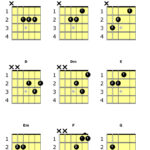In the hushed Reading Room for Rare Books and Music at the British Library in London, the provided headphones transport you to a recorded conversation with photographer Angus McBean in 1989. Just months before his passing, McBean’s excited tones reveal an infectious enthusiasm for life and a sheer joy in recounting his illustrious career. He captured portraits of luminaries from stage, screen, and literature – Audrey Hepburn, Dame Peggy Ashcroft, Ivor Novello, Vivien Leigh, the Beatles, Sir Ralph Richardson, Dame Margot Fonteyn, T.S. Eliot, Benjamin Britten – an incredible roster. His playful energy, evident even in audio, mirrors the surreal settings he crafted for his subjects, influenced by his early work as a mask-maker and stage designer, and the impact of Surrealism itself.
Given his portfolio of stars, it’s perhaps unsurprising to hear McBean’s nonchalant reaction to a request from David Sylvian’s agent: ‘When David Sylvian’s agent rang up and said would I like to photograph David Sylvian – because he would like to be photographed – I said, “Who is David Sylvian?!” He said, “Oh, he is a pop singer of note and head of the group called Japan. And he’s just been voted the most beautiful man in the world.” I said, “I’m sorry but I can’t do it, I don’t photograph seriously these days.”’
McBean believed that was the end of it, but fate had other plans. ‘Then they rang up, somebody called Corbijn rang up, Anton Corbijn…he’s a photographer as well, he makes videos for pop groups, and he said he was in a dilemma because David Sylvian had found a photograph…and he wanted his video made based on this photograph, and so [Corbijn] told him [Sylvian]… “Have you asked Angus McBean’s permission? I don’t know how the law looks upon copying a photograph in another medium, but at least I think you should have his permission.”’
Anton Corbijn recalls that his work on the Propaganda video, ‘Dr. Mabuse’, sparked Sylvian’s interest for ‘Red Guitar’. ‘David saw the Propaganda video on TV and subsequently approached me for this song, his first solo single since leaving the group Japan. I had photographed him a few times in that setting, he was often seen as a teenage pin-up, poster boy, very striking and introvert appearance. For him to ask me to direct this video was making a statement, I think. Anyway, it is again a challenge for me to come up with ideas and I spent a couple of days in Bruxelles in a hotel room to concentrate on that. I found it so difficult to come up with anything worthwhile… What I came up with was basically lots of images that have no connection to each other and the main image is based on a photo by Angus McBean.’ (2005)
The photograph in question was McBean’s 1938 portrait of Dame Flora Robson, depicting the actress emerging from a desert landscape, strikingly juxtaposed with a large seashell in the foreground. McBean recounts his amused reaction: ‘And David Sylvian wants them to build the desert picture in the studio, and him to come bursting out of it, singing “the red guitar” or whatever. And so I said, “Yes, of course you can do it so long as you acknowledge me.” And so he said, “Oh, that’s very kind of you,” and rang off, you see.’
‘Well after about three days he’s on the phone again. “We’ve been thinking about it…How does one acknowledge somebody in a video? How is it done?” I said, “I’m sorry but that’s your problem! (laughter) I’m not asking for much!” (more laughter). And so he said, “Well, we’ve been thinking, and the only thing we can think of is for you to take part in the video.”’
‘I did and we got to No 7 on Top of the Pops! (laughter). I had to sing one verse of the song and my voice is terrible. I’m practically tone deaf. And so I sang along with the record, and by the miracles of modern science I opened my aged lips and out comes the golden voice of David Sylvian!’
While the single peaked at number 17 in the UK charts, McBean’s delight at appearing in a pop video on TOTP was palpable, exceeding any concern for chart positions.
 flora-robson-1938-angus-mcbean
flora-robson-1938-angus-mcbean
The iconic Flora Robson photograph by Angus McBean, 1938, the inspiration for the “Red Guitar” video.
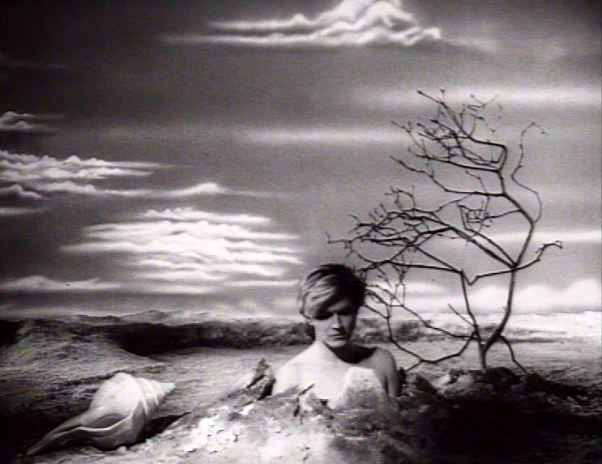 DS RG
DS RG
A still from the ‘Red Guitar’ music video, showcasing its visually striking and surreal style.
The ‘Red Guitar’ video demonstrates a confident artistic vision, especially when contrasted with Anton Corbijn’s earlier, more raw video for Propaganda’s ‘Dr. Mabuse.’ While ‘Dr. Mabuse’ employed a handheld camera and a deliberately low-budget aesthetic, ‘Red Guitar’ showcases meticulously composed imagery, reflecting Corbijn’s expertise in black and white still photography. Crucially, the video eschews the then-common trend of narrative-driven music promos, which often confined the viewer to a single interpretation of the music.
Sylvian himself criticized the disposability of storyline-based videos for superficial music: ‘Most of the videos you see accompany rather superficial, hollow pieces of music,’ said Sylvian, ‘that’s why they’ve got those horrible storyline videos because there is very little there and you’re giving a disposable piece of music a disposable image that will last a month or two.’ He emphasized the importance of individual interpretation in his lyrics, and Corbijn’s visual approach for ‘Red Guitar’ mirrored this, opening up imaginative possibilities rather than dictating a fixed narrative.
Surrealism and Symbolism in the Red Guitar Video
The ‘Red Guitar’ promotional video embraces surrealism, echoing McBean’s photographic style. Some shots directly recreate McBean’s set design, while others subtly reflect the introspective themes explored on Sylvian’s Brilliant Trees album. The black balloons held by a child and McBean, emblazoned with ‘LIFE’ and ‘SOUL’, and the stark age contrast between them, contribute to the video’s enigmatic and thought-provoking atmosphere. Memories diverge regarding the child actor – McBean recalled a girl in boy’s clothes, while Corbijn remembered a boy from Lycee Francais in London. McBean’s video appearance effectively acknowledged his photographic concept and paid tribute to his significant influence. ‘He’s a lovely character,’ Sylvian said of McBean. ‘It shows so much in the pictures you see of him. It showed in the video I think as well even though he’s giving a performance. He’s such a warm-hearted man and such a creative man.’
‘It’s amazing to me that he’s been ignored for so many years and only on his 80th birthday he’s recognised as being a major influence to the major photographers of this age.’
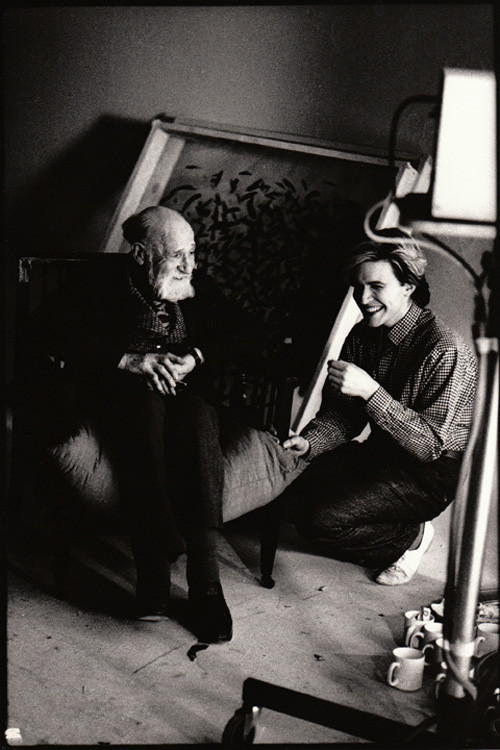 david-and-angus-mcbean-anton-corbijn-1984-ds-facebook
david-and-angus-mcbean-anton-corbijn-1984-ds-facebook
A photograph capturing Angus McBean and David Sylvian in 1984 by Anton Corbijn, highlighting their collaborative spirit. David Sylvian described McBean as ‘a sweet, cheerful, gentle soul.’
Sylvian has openly discussed his drug use during the Brilliant Trees period, stating: “Red Guitar’? Oh, that was written at home during a drugged up stupor one morning. That whole album was done on coke. I couldn’t stay awake during that period and I figured a coke habit would be easier to deal with than constant exhaustion.’ (2000)
Upon its release as the lead single, Sylvian viewed ‘Red Guitar’ as an apt introduction to his solo work and a musical expression of his life. ‘It’s quite a good commercial for the album. ‘Red Guitar’ symbolises art in a way, and art is my means of expression. The chorus just says, “it’s my vice and my virtue. It’s something that will pre-occupy my life and give it the most pleasure and the most pain.” It’s that simple.’
Literary Inspirations Behind the Lyrics
The lyrics of ‘Red Guitar’ reveal Sylvian’s literary influences, drawing from classic works:
*‘I recognise no method of living that I know
I see only the basic materials I may use
If you ask me, I may tell you
It’s been this way for years
I play my red guitar
It’s the devil in the flesh
It’s the iron in my soul
I understand you’re facing problems inside you
A certain difficulty of being that I know too’*
References to ‘the devil in the flesh’, ‘the iron in my soul’ and ‘a difficulty of being’ are direct nods to Raymond Radiguet’s Le Diable au Corps, Jean-Paul Sartre’s Iron in the Soul, and Jean Cocteau’s La Difficulté d’être. Sylvian found connection with these literary figures, feeling a sense of shared experience. ‘When I was reading Cocteau what fascinated me most was what normally fascinates most, the similarity of your feelings with the writer’s. It’s like stepping stones – it’s knowing that somebody trod that way before you or is going the same way, or is feeling very similar things. Reading things like that is useful, especially to isolated people like myself who don’t socialise very much, it builds up a confidence in a way or just a strength – you think, “it’s right what I’m doing.”’ (1994)
The single’s cover art, photographed by Simon Gargette, further hints at Cocteau’s influence with a simple guitar sketch reminiscent of the French writer’s style. Sylvian’s affinity for early 20th-century creatives extends to his friendship with McBean, bridging a connection to an era he had previously encountered primarily through literature. While Cocteau wasn’t a Surrealist, his work possessed surreal qualities, and in McBean, Sylvian found a tangible link to that artistic world.
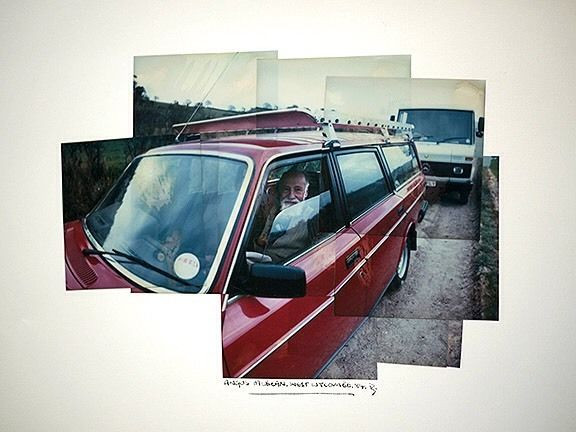 Angus McBean, West Wycombe, 1984
Angus McBean, West Wycombe, 1984
David Sylvian’s Polaroid montage of Angus McBean, taken during the ‘Red Guitar’ video shoot in 1984, capturing the day’s creative atmosphere.
Musical Complexity Beneath the Pop Surface of Red Guitar
‘Red Guitar’, while seemingly conventional on Brilliant Trees, showcases significant musical ingenuity. Mark Isham, making his debut with Sylvian, noted the song’s unconventional chord changes: ‘there’s been a couple of times when it’s taken me a while to figure out what the hell he’s doing. The changes on ‘Red Guitar’ for example, are very complex and non-traditional. There are certain accepted orders of chord relationships that most all music has, but this piece goes against all of those, and that gives it a wonderful mood and sense’ (1988). Isham’s spiraling brass is complemented by piano textures from Ryuichi Sakamoto and co-producer Steve Nye. Ronny Drayton and Wayne Braithwaite inject funk elements, contrasting with Phil Palmer’s sophisticated guitar work.
Phil Palmer reflected on the track’s layered guitars: ‘Not sure what Ronny Drayton played there… but I hear three of my guitar parts. An acoustic during the verses and two electric parts in the chorus.’ (2021)
Steve Jansen’s meticulous drumming and percussion are integral to the song’s unique sound. He revealed the innovative snare recording technique: ‘‘Red Guitar’ snare was recorded in a stone stairwell at Hansa Studios, Berlin. The reverb created by the snare in the stairwell was then fed through a Leslie Hammond organ rotary speaker which spins, giving a stereo effect. This was added to the snare sound to create what you can hear, a sort of breathy modulation…’ (SJ, 2016). Jansen even incorporated the sound of his Canon A1 camera shutter into the song’s downbeat, demonstrating his fusion of photography and music.
Rediscovering Holger Czukay’s Lost Guitar Solo
Hansa Studios session videos offer valuable glimpses into the recording process. Footage reveals the layering of piano, percussion, and bass tracks. More extensive video from 2021 unveiled a surprising detail: Holger Czukay, credited on all Brilliant Trees tracks, actually recorded a guitar solo for ‘Red Guitar’. Sylvian expressed regret at its omission: ‘My only regret is that I didn’t use Holger’s guitar solo on ‘Red Guitar’… At the time I felt it a little lightweight compared to the mix Steve Nye was prepping. I would now mix it quite differently… I loved Holger dearly and wish I’d immortalised his solo in some capacity.’ He even suggested a potential future remix to include Czukay’s contribution.
The footage highlights Czukay’s distinctive guitar sound – bright and resonant – achieved by slowing down the recording process, a technique evident in his influential album Movies.
Holger Czukay captured on film recording his guitar solo for ‘Red Guitar’, a part ultimately left out of the final mix. The full film is available on the samadhisound Vimeo channel. Copyright David Sylvian & Yuka Fujii.
‘Red Guitar’ stands as a cohesive and compelling song, a testament to the collaborative artistry involved. Its blend of music, lyrics, visuals, and cover art formed a perfect launchpad for David Sylvian’s solo career. Looking back, ‘Red Guitar’ remains a well-crafted and significant early step in a career defined by artistic exploration, validated by the extensive body of work represented by Hypergraphia.
‘Red Guitar’ Credits:
- Wayne Braithwaite – bass
- Ronny Drayton – guitar
- Mark Isham – trumpet
- Steve Jansen – drums, percussion
- Steve Nye – additional piano
- Phil Palmer – guitar
- Ryuichi Sakamoto – piano
- David Sylvian – vocal, synthesizer
Music and lyrics by David Sylvian.
Produced by David Sylvian and Steve Nye. From Brilliant Trees, Virgin, 1984
Recorded in London and Berlin, 1983/1984
Lyrics © copyright samadhisound publishing
Download ‘Red Guitar’: iTunes
Physical Media of Brilliant Trees: Amazon – cd | Amazon – vinyl reissue
Note: The Polaroid montage of Angus McBean is courtesy of Sven Jacob’s private collection. Studio video clips are thanks to VH-1, Steve Jansen, and David Sylvian & Yuka Fujii. The full Hansa sessions film is available on the official Vimeo channel here. The Angus McBean photography archive is at the Harvard Library site here. David Sylvian quotes are from 1984 interviews unless specified. Full sources are here.
‘Atmosphere is extremely important to me in photos…I like Angus McBean very much because there’s so much of his character in the pictures he takes.’ David Sylvian, 1984
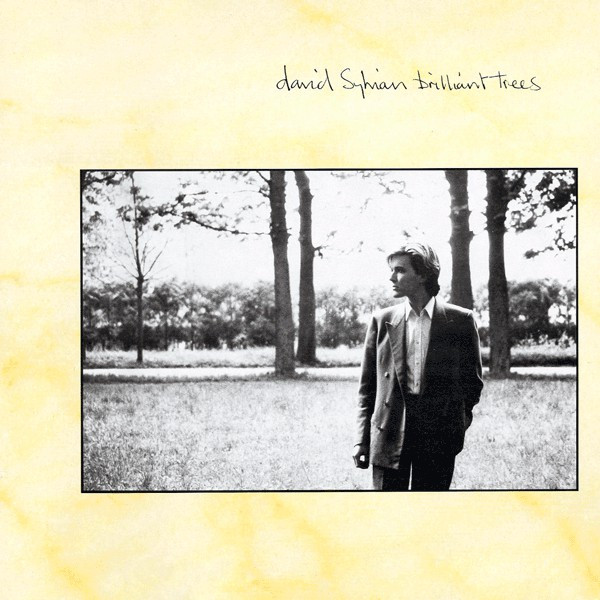 brilliant-trees
brilliant-trees
Explore More from Brilliant Trees & Era:
Pulling Punches | The Ink in the Well | Brilliant Trees | Forbidden Colours (version) | Nagarkot

